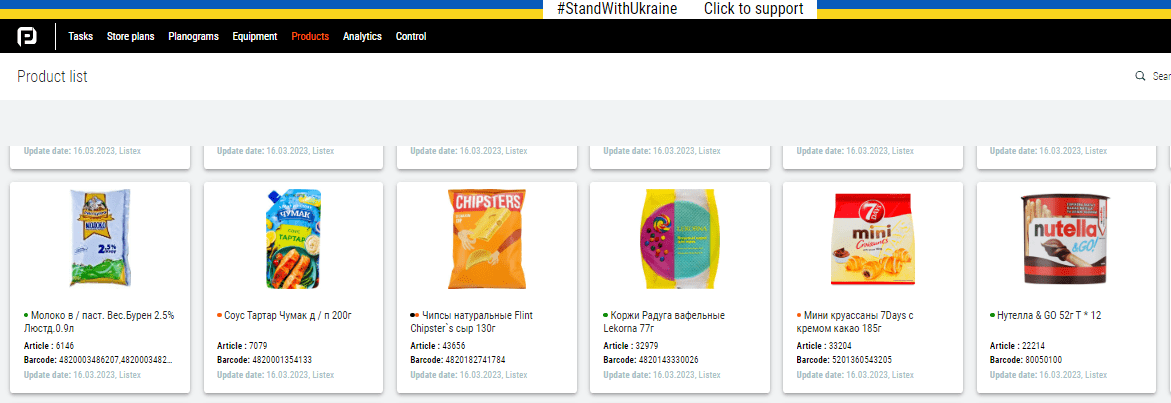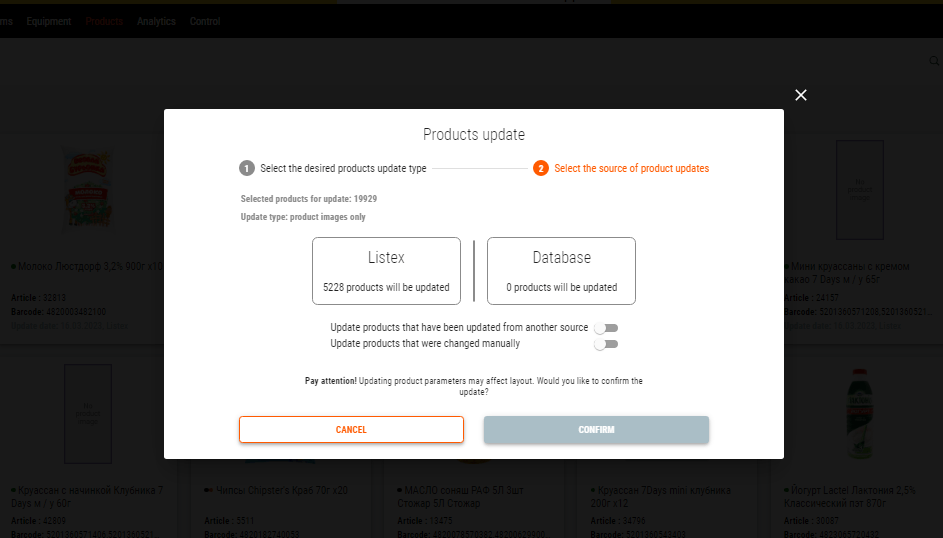
From Chaos to Order: 10 Principles for a Winning Planogram
Table of Content:
10 Principles for Creating an Effective In-store Planogram
Merchandisers Workflow Optimization Tool
A retail planogram is an priceless tool for retailers, especially for grocery stores with a wide variety of products from different suppliers.
A large number of shelves that need to be filled according to merchandising and marketing strategies, and at the same time, to avoid chaos in the store. How could we do it? Rely on modern technology and digitalize the processes in your business. First of all, find a tool for merchandising automation which will reduce the merchandiser's time for creating planograms, and will facilitate the work of the manager in the store when performing layouts.
In order to start working with planograms and creating efficient layouts, you need to define the assortment, product categories in the store, and work through the decision tree.
What is a Consumer Decision Tree (CDT)?
It is a scheme that resembles a tree in its structure and which models an algorithm for making decisions that can lead to a favorable buying outcome.
The (customer) decision trees provide insight into customer behavior and motivation to make a purchase.
Decision trees provide knowledge about how to structure or product categories and, accordingly, which products to fill planograms with.
A decision tree structure is created based on historical sales data. It groups products in the way customers look for them. The decision tree allows you to analyze between which product categories customers choose, as well as to identify gaps in the assortment and new opportunities.
All shoppers crave an easy, effortless shopping experience. In order to build an effective planogram, it is important to determine the product categories and how to tailor the assortment to the shopping behavior of shoppers. Some stores display a limited selection of items to encourage customers to interact with the essentials, while others offer a broad assortment with well-designed product displays so shoppers can see the variety. Therefore, the level of detail and complexity of the planogram will depend on the size of the store and the number of products presented.
Efficient Layout
A retail planogram (POG) is a visual model of display layout that shows how products should be positioned on store shelves to increase sales. A successful store planogram can have a significant impact on revenue by increasing the visibility, accessibility and availability of merchandise to shoppers.
We've identified principles for creating an effective in-store planogram. Whether you're a seasoned retail professional or just starting out, these tips will help you create a planogram that really works.
10 Principles for Creating an Effective In-store Planogram
1. Understanding Your Customers
The first and most important principle of a successful planogram is to know your customer. have a thorough understanding of their needs, preferences and buying behavior. This is necessary to create a planogram that will appeal to the customer. Analyze sales data, customer feedback and market research to determine what your customers want and need.
2. Use sales data and analytics
This is the backbone of any planogram. Use sales data to determine which products are selling well and which are not. Analyze in-store customer traffic to determine the most popular areas of your store. To do this, use the store traffic heat map available on the PlanoHero platform. Use this information to create a planogram that will boost sales and make it easier for customers to find products.
3. Set priorities to increase profits
The planogram should focus on the items that generate the most revenue and profit for your store. Place these items at eye level or in high-traffic areas. Follow basic merchandising principles.
4. Create logical navigation
Build planograms and optimize your store space to create a logical flow for customers as they navigate the store. Arrange products on shelves so they are clear and accessible to shoppers during their visit to the store. Place related and complementary products side by side to encourage cross-selling.
5. Consider the product parameters
Product characteristics (size, weight, packaging) are important factors when creating a planogram. Working with PlanoHero, a service for automating planogramming, you can upload the necessary goods in a few clicks. Synchronization of the service with Listex (the electronic catalog of products) provides a ready base of goods with pictures and sizes.

On a daily basis, the PlanoHero platform system checks for updates for products with the electronic catalog Listex and Database (intermediate database) so you can update all the products for which there will be size or image updates directly on the service.

The PlanoHero service also integrates a Google search. It helps to quickly find and upload the necessary pictures of products to create layouts on the planogram.
When creating a display on a planogram, follow the main principles of merchandising. Place large and heavy merchandise on lower shelves to prevent accidents and make it easier to access and lift such items.
6. Use visual merchandising
A powerful tool for creating a visually appealing planogram. Consider salesroom design, colors, lighting, and signage to draw attention to merchandise and create a visually appealing display.
7. Flexibility
Your planogram should be able to respond to changes in product demand and seasonal fluctuations. Review and update your planograms to ensure that your layout still meets customer needs and demand.
8. Invest time in training
A planogram will only be effective and increase sales if it is properly created. Train your merchandising (planogramming) staff on how to create, customize, and update planograms in a timely manner.
9. Monitoring the compliance of the store layout
Monitor the implementation of planograms in the store and check the compliance of the layout with the planogram. An effective planogram means a properly executed store layout, constant monitoring of shelves, and adjustments to product placement if necessary.
10. Measure, analyze, and evaluate the results
Finally, it's time to analyze the effectiveness of the planogram. Use sales data to determine how the planogram affected revenue and profitability. Use this information to adjust and optimize the planogram to maximize success.
Merchandisers Workflow Optimization Tool
The planogram is an effective tool to optimize merchandisers' workflow. Planogram helps merchandisers manage space and maximize sales. Here are a few reasons why a planogram makes their lives easier:
Efficient use of space. A planogram allows retailers to maximize the use of store or supermarket space by ensuring that merchandise is efficiently placed on the shelves. This helps ensure optimal shelf space and increased sales.
Saves time in creating layouts. A planogram helps you quickly and easily create a planogram, send it to the store, place items on the shelves, and monitor fulfillment. This allows you to focus on other aspects of the store, such as customer service and doing business.
Increased sales. A planogram helps to place merchandise in a way that makes it more visible and accessible to customers. This increases the chances of selling an item because it is easier to spot and take it off the shelf.
With a planogram, merchandisers can place items on the shelves faster and more accurately, which reduces the cost, time and effort of organizing in-store processes. In addition, the planogram maximizes the placement of goods on shelves and other store equipment. It saves space and avoids overstocking of goods. By optimizing store space, merchandisers can place more products in the available space and avoid shelf clutter, reducing the need for additional storage space.
Overall, a successful in-store planogram requires careful consideration of customer needs, data analysis, evaluation, and continuous improvement. Create a planogram following these principles. Develop a detailed plan for product placement on the shelves. Set up your planogramming process and manage shelf space on a single PlanoHero platform.
Looking for a service to create planograms?
Try a free demo version of PlanoHero




